Open dumping and burning of mixed biomedical waste raises a stink in Sitapur
Despite two centralised biomedical waste treatment facilities, syringes, discarded medicines, blood-soaked bandages, human tissues and placenta are openly dumped and burnt in a field adjacent to the community health centre in Sitapur district’s Mishrikh tehsil. Local people and sanitation workers suffer its putrefying smell and toxic fumes.
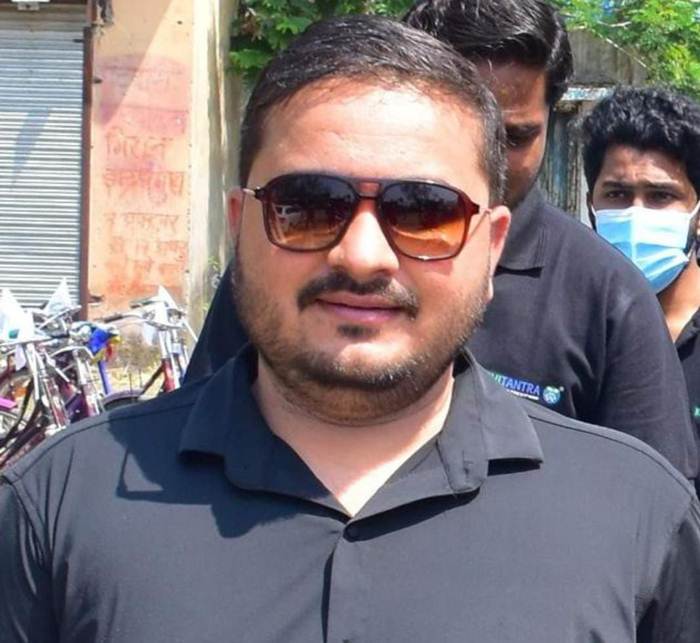
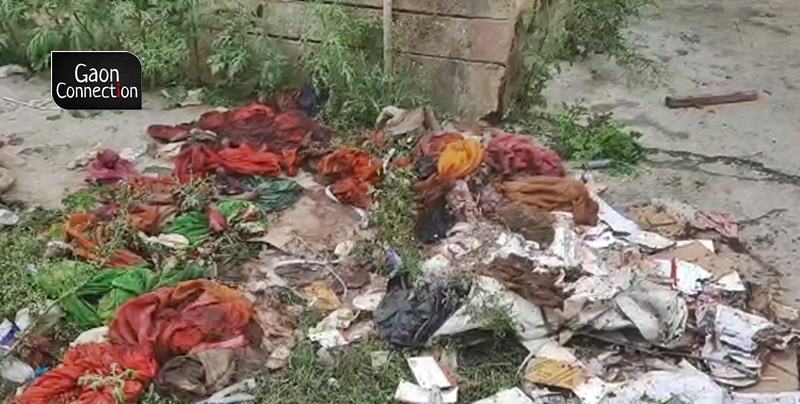
Sitapur CMO Madhu Gairola told Gaon Connection that such careless treatment of waste is not permitted. Photo by Mohit Shukla
Sitapur, Uttar Pradesh
Situated at a distance of about 35 kilometres from his house, the community health centre (CHC) in Mishrikh municipality of Sitapur is the most equipped health facility available to the family of 45-year-old Viresh Shukla. And yet, he has to think twice before taking any of his family members to the health centre for medical aid, or even to buy medicines.
“The premises of the swasthya kendra (CHC) is filled with a rotting smell. The odour is so bad that I feel like vomiting my guts out. It becomes unbearable to stand the smell even after covering my mouth with a cloth or a face mask that I wear due to Corona,” said Shukla.
The putrefying smell that repels Shukla from availing the medical facilities at the Mishrikh CHC arises out of the dumping of the mixed biomedical waste in the nearby field. On August 30 when Gaon Connection reached the site of illegal waste disposal, it found swarms of flies buzzing on the blood soaked clothes, human tissues and decomposing placenta, which, the local villagers complained, was regularly dumped in the open.
Also Read: The sanitation workers are on the frontline, but we didn’t tell them how to manage biomedical waste

Also, stray dogs in the area had further chewed open the polythene bags that contained medical waste including syringes and human fluid soaked bandages.
Raj Kumar, a sanitation worker working for the Mishrikh municipality, told Gaon Connection that handling biomedical waste was not exactly a part of his rightful work but he handled the waste as the area would be impossible to live in if he refused to clear it.
“The smell is so bad that it has its after-effects on me. I often have a hard time having my dinner at night as I’m constantly disturbed because of the foul smell that I’m subjected to throughout the day,” the sanitation worker told Gaon Connection. “Used injection needles, masks, gloves are some of the usual hazards that I handle with my bare hands. I feel the constant risk of getting infected with some serious disease,” Kumar worried.
Also Read: Leaking roofs, missing doors, weeds everywhere and few staff: Rural health centres in shambles
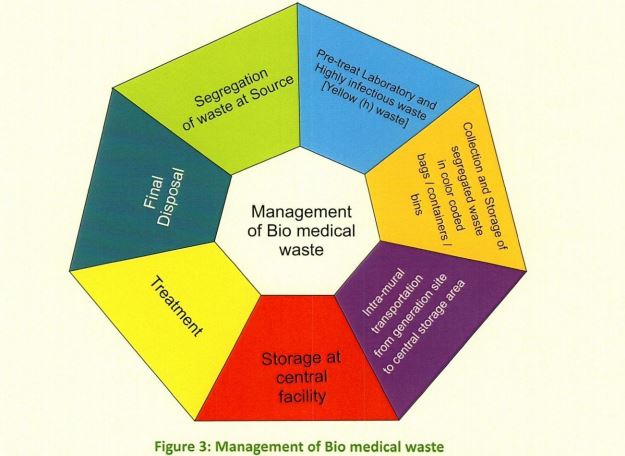
As per the Uttar Pradesh Pollution Control Board, on an average 1020.80 kilograms of biomedical waste is produced in Sitapur every day. Two private companies have been given the contract for safe disposal of this waste which comes out of the various health facilities in the district.
However, local people complain that mixed hospital waste is dumped in the open, which creates unhygienic conditions and often leads to spreading of the diseases. But authorities look the other way.
“The hospitals or health centres that dispose of their biomedical waste unhygienically in the open, we inform the CMO (chief medical officer) and action is taken against such centres. We have instructed the Mishrikh CHC not to dispose the hazardous waste like this but ultimately it’s CMO’s call,” Ram Karan, regional officer at the pollution control board, told Gaon Connection.
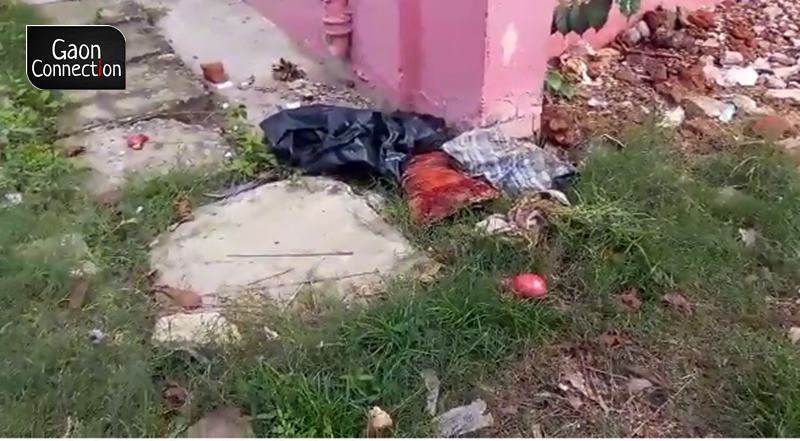
Biomedical waste (mis)management in Sitapur
Explaining the mechanism of biomedical waste disposal in Sitapur, the regional officer said, “There are a total of 200 healthcare facilities in Sitapur district and 66 of these do not have the facility to admit patients. A total of 1020.80 kilograms of biomedical waste is produced in these 200 healthcare facilities”.
Also Read: CPCB guidelines and centralised waste treatment facilities help in better management of COVID19 waste in Delhi: Toxics Link study
Private companies have been given the tenders for treating the biomedical waste in the district at the common biomedical waste treatment facilities. Two companies, namely Star Pollutech Pvt Ltd and Synergy Waste Management Corporation Pvt Ltd are responsible for the proper treatment of such wastes in Sitapur.
Located in the Pisawan block’s Chadra area, the Star Pollutech is in charge of collecting and treating the biomedical waste from private hospitals in Sitapur while Synergy is responsible for the waste treatment from government health centres.
Rakesh Dwivedi, the executive officer of the Synergy company told Gaon Connection that it has a tender of treating waste from the government hospitals but it only collects waste that is segregated at source and packed properly in the respective bags.
As per the hospital waste management rules chalked out by the Central Pollution Control Board, the waste is to be segregated at the source health centre into different coloured bags — yellow, red, white and blue.
Blood bags, stocks or specimens of microorganisms, live or attenuated vaccines, human and animal cell cultures including tissues and organs are all supposed to be kept in the yellow bags.
While wastes generated from disposable items such as tubing, bottles, intravenous tubes and sets, catheters, urine bags, syringes without needles, fixed needle syringes with their needles cut, and gloves are to be stored in red bags. White bags are for sharp objects like needles and blue bags are to be used for broken or discarded and contaminated glass including medicine vials.
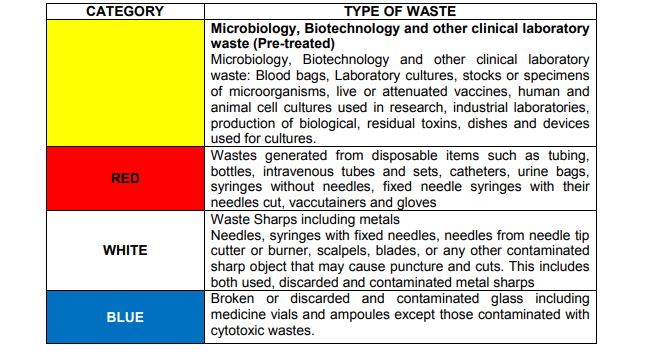
“We have four vehicles to bring the waste from the government health centres. We incinerate a total of six to seven tonnes (6,000 kgs to 7,000 kgs) of biomedical waste a month in Sitapur. But we do not collect waste that is thrown off unhygienically in the open. It has to be packed in a polythene,” Dwivedi said.
Meanwhile, Himanshu Batham, a representative of the Star Pollutech told Gaon Connection, “We have five vehicles to bring the waste from the hospitals on a daily basis and 500 to 600 kgs of biomedical waste is incinerated in our plant. Almost 250 grams of medical waste is produced in each bed at the hospitals daily. We get paid Rs 200 per such bed in monthly payment”.
Also Read: COVID19 third wave in India expected to be less severe than the second wave: ICMR
However, despite having centralised biomedical waste treatment facilities, mixed medical waste is openly dumped in the district.
People suffer
Nishant Mishra, an emergency ambulance driver at the Mishrikh CHC is aghast at the foul smell he breathes every time the mixed medical waste is burnt in the nearby field.
“The foul smell intensifies when the biomedical waste is set on fire. Then it just gets unbearable. We have complained to doctors but they tell us that this waste is not very harmful,” Mishra said.
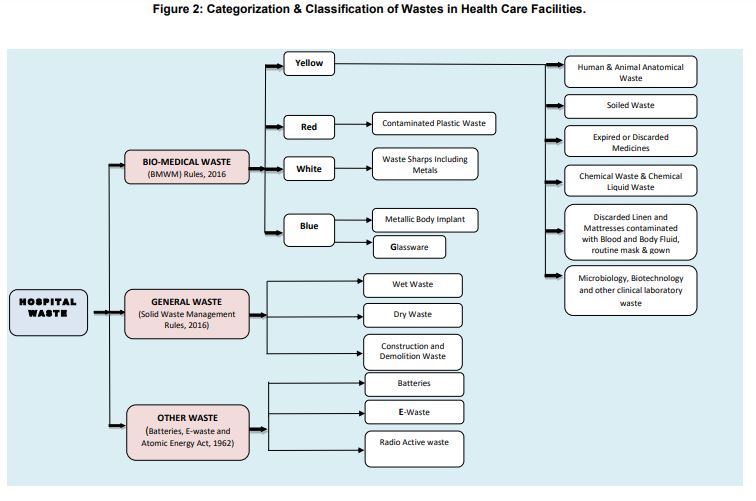
Apoorva Pandey, a 32-year old resident of Mishrikh, who lives within a walkable distance from the health centre, told Gaon Connection that the centre has three rooms for storing the biomedical waste.
“Still they throw mixed waste out in the open, I don’t understand why,” he said.
Almost 20 kilometres from Mishrikh, the CHC in Pisawan block was in a similar condition. The biomedical waste was burning near the centre. A worker at the centre told Gaon Connection on the condition of anonymity that the waste is not disposed of properly.
Officials pass the buck
The Mishrikh CHC incharge Ashish Singh told Gaon Connection that he has recently taken charge of the health centre and is making efforts to streamline the waste management.
“This waste is not very harmful. The municipality vehicle doesn’t come on time which is why the waste gets deposited but we are trying to manage the biomedical waste in a better manner,” Singh said.
Also Read: Battered by floods, Varanasi now hit by dengue outbreak
Meanwhile, the Sitapur CMO Madhu Gairola told Gaon Connection that such careless treatment of waste is not permitted.
“Nobody can dispose of biomedical waste like this. Such harmful waste has to be stored in biohazard facilities till the time they are disposed. If a health facility is not doing so, we will take action and demand written clarification about the issue,” she told Gaon Connection.

